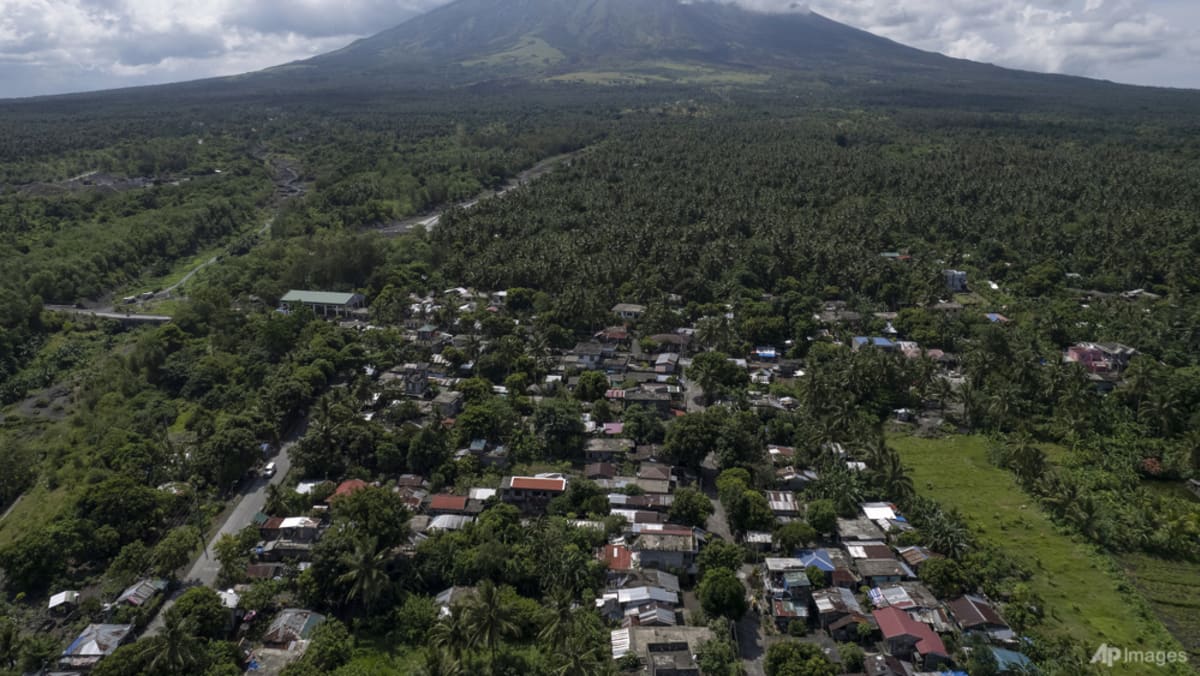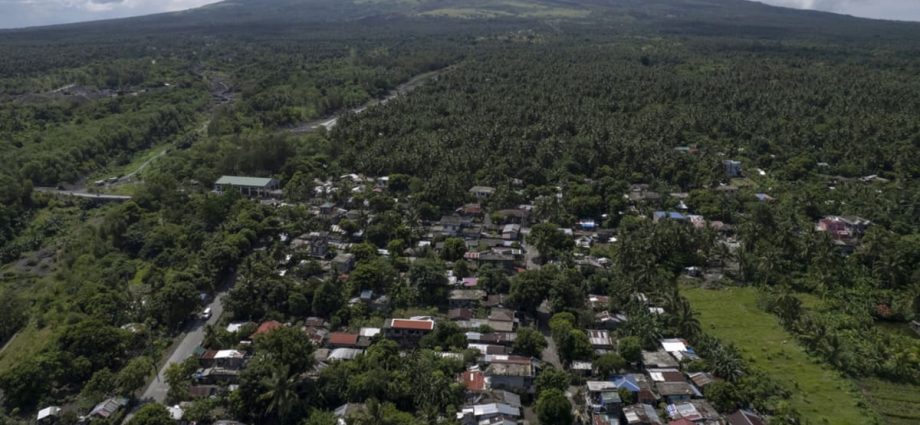
AP journalists were allowed by police to briefly join a house-to-house patrol of a Calbayog neighbourhood and saw a few defiant residents still in their houses. One villager insisted to police that he had to remain because the 40 roosters he had bred for cockfights might be stolen if he left. Dance music or radio news broadcasts could be heard at two houses, and at least three others had laundry hanging on clotheslines in the sun.
At Mi-isi, another village well inside the permanent danger zone in Mayon’s southeastern foothills, longtime resident Miniong Asilo laughed off warnings from authorities and volcano scientists.
“I’m not scared, but outsiders will probably have a heart attack if they live here,” the 54-year-old father of nine said, adding that he has lost count of the times he has witnessed Mayon’s fury.
Asilo and his family have survived for decades off the proceeds from his vegetable farm, piggery, coconut grove and on-and-off work as caretaker of a nearby gravel and sand quarry.
“I was born here. I have not seen the fire and lava reach this village,” Asilo said.
As he spoke, Mayon rumbled faintly and lava flowed from its swollen crater a kilometre down a gulley near the village, in what scientists have described as a “very gentle” eruption so far.
But the government isn’t taking any chances.
Since the volcano began expelling lava a week ago, soldiers, police and local officials have moved more than 20,000 villagers from the danger zone in forced evacuations to 28 temporary shelters, mostly schools, according to the government’s disaster-response agency.
With most classrooms now crammed with impoverished evacuees and their belongings, teachers have been forced to hold classes in school corridors, in chapels and under trees, Albay provincial education official Alvin Cruz said.
The crisis is an additional challenge for President Ferdinand Marcos Jr, who took office in June last year and inherited an economy battered by the coronavirus pandemic, which deepened poverty, unemployment, hunger and the country’s debt. He flew to Albay on Wednesday to hand out food packs and reassure the evacuees of government help, but warned that Mayon’s gentle eruption may drag on for months, keeping them away from their homes.
The number of displaced villagers could more than double if Mayon’s eruption turns violent and life-threatening, which government volcanologists say is still possible within days or weeks. That could prompt an expansion of the danger zone and the forced evacuation of many more residents.
Thousands of villagers have been given homes away from Mayon in the past, but many returned to its fertile slopes because of inadequate livelihood options in government-established relocation sites, said Eddie Nunez, a resident of Bonga village, about 8km from Mayon’s crater.
Nunez, 59, lost an uncle and cousin when they were hit by volcanic ash, steam and boulders in a sudden 1993 explosion while farming on Mayon’s lower slopes. Dozens of other farmers were also killed, he said.
The lack of jobs and opportunities elsewhere forces people to continue risking their lives farming vegetables and scrounging for other sources of income at the foot of the volcano, Nunez said, comparing the choice to Russian roulette.
“You either get lucky or you get hit,” he said.

